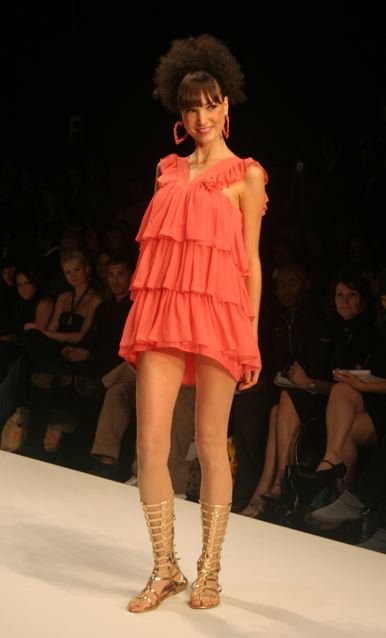CLOTHING HAS always played an important part in determining
women’s status in society. For ages, it has shaped our notions of
grace, beauty, modesty and shame. As in India, even in the west before
the French revolution, class, gender or status in social hierarchy
strictly regulated the style of clothing. The onset of the French
Revolution and the simultaneous spread of the ideas of liberty equality
and fraternity brought about an unprecedented change in the position of
women, which was also reflected in the style of clothing.
Styles
of clothing emphasised the differences between men and women. The
peculiar style of wearing the sari in India clearly revealed that
women’s place was essentially in the home. The traditional style of
wearing the sari without the blouse and the elaborate jewellery that
women wore not only restricted their movement but also served society’s
purpose to perceive women as nothing but a sexual object. From
childhood, Victorian women were tightly laced up and dressed in stays.
The effort was to restrict the growth of their bodies and contain them
within small moulds. Tightly laced small waisted women were considered
to be attractive and graceful. Thus, clothing served to create the
image of docile, dutiful, submissive and obedient women.
Women
vehemently opposed these images about them. They demanded equality and
equal treatment with men. With the spread of the suffragette movement
throughout Europe and America and the strengthening of the ideas of
democracy and freedom, these demands became stronger. Traditional
feminine dress was criticised by feminist since these hampered movement
and prevented women from working and earning a livelihood. Nationalist
in India also felt women’s participation in public life was necessary
and for this, a reform in dress was absolutely essential. Therefore,
the demand everywhere was for loose, comfortable, convenient clothing.
Women’s place was not just in the home. She had her role to play even
public life. She, like men, needed to be independent and be an equal
partner in life and not a subordinate partner. These ideals were
reflected in the growing demand for simplification of dress and
shortening of skirts, which would enable them to move freely. In India,
demand for ‘civilised’ clothing led to the adoption of the Parsee style
of wearing the sari pinned to the left shoulder with a brooch and worn
with a blouse and shoes. It clearly reflected a massive change in
society’s attitude towards women.
The
advance of the industrial age and economic globalisation has provided
greater opportunities for women in public life. She is not only an
equal partner to her male counterpart but she is also the master of her
own destiny. But in this materialistic age, where the main motive is to
earn as much money possible within a short time span, women need to
pause for a while and look back at the centuries of struggle that was
fought by our ancestors so that we could lead a life of dignity. It is
sad to see how our sisters in fashion shows exhibit their bodies more
that the dress they are wearing. It is surprising to see how our
educated and conscious sisters have nothing to say about wardrobe
malfunction, which is simply ignored as an accident. Even if there were
protests, the news has not reached the common people who are also the
audience of these fashion shows.











